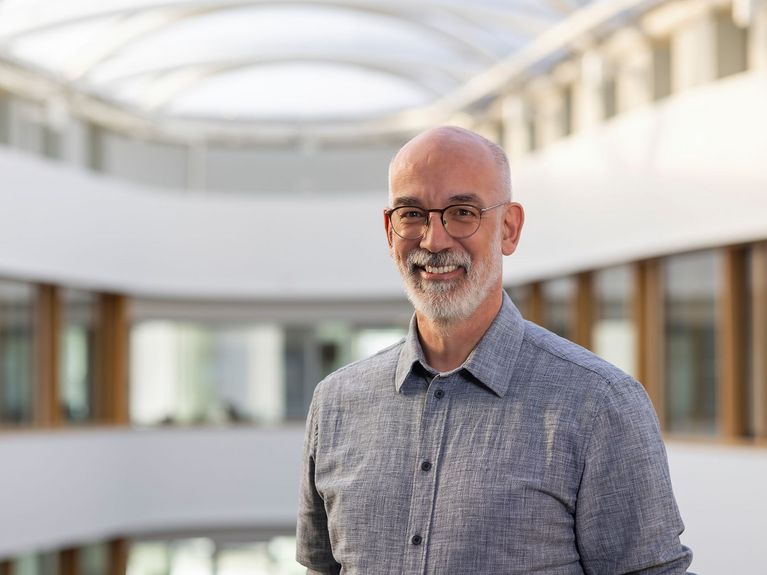Viewpoint
Why Germany should boldly lead the way with the Einstein Telescope

Christian Stegmann is Director of Astroparticle Physics at DESY and also responsible for site management in Zeuthen. Image: Industriefotografie Steinbach
An observatory for gravitational waves not only opens a new window onto the universe, but also represents an investment in Europe’s technological sovereignty. A viewpoint by Christian Stegmann, Director of Astrophysics at DESY.
Gravitational waves are waves in the fabric of space-time – triggered by collisions of extremely dense objects such as black holes and neutron stars – and we’ve only been able to measure them directly for less than ten years. This advance has opened a new window onto the cosmos. In addition to electromagnetic waves ranging from radio to gamma radiation and neutrinos, gravitational wave astronomy now also allows us to look into the universe itself.
Europe is now on the verge of the next big step: the Einstein Telescope (ET), a future observatory that will measure gravitational waves with unprecedented sensitivity. Built deep underground, shielded from interference, and equipped with state-of-the-art precision interferometry with arm lengths of at least 10 kilometers, it will allow us to see further and deeper into space than ever before. The ET will explore the formation and evolution of black holes and neutron stars, enable the rigorous testing of general relativity, be able to investigate dark matter and dark energy in new ways – and reach back nearly to the Big Bang.
But the ET is more than an observatory. The project is driving innovations in laser, cryogenic and vacuum technologies, data analysis, and artificial intelligence. It is providing impetus far beyond science and is a powerful symbol of international cooperation. Over 1,400 researchers from all over the world, mainly from Europe, are involved in the ET collaboration – which also means that Europe has an opportunity to take the lead in science and technology here. Germany plays a key role in this. With the GEO600 detector at the Albert Einstein Institute in Hanover, it laid important technological foundations for the project early on. Today, more than 200 researchers in Germany are contributing their expertise to the ET – in areas ranging from quantum optics, detector development, and theory to geophysics and data management.
The Federal Ministry of Research, Technology, and Space (BMFTR) has now placed a preparatory project for the ET on its short list for future research infrastructures. The aim is to clarify open questions regarding the observatory’s location, technical implementation, costs and governance in the coming years. Helmholtz will be an essential player in this regard. DESY and KIT, two Helmholtz Centers with extensive experience in large research infrastructures, are involved. In addition, with the support of DESY, the new German Center for Astrophysics (DZA) is being established in Görlitz as a national research center to strengthen gravitational wave research in the long term.
It is still unclear where the ET will be built. The options currently on the table are the Euregio Meuse-Rhine, which combines parts of Belgium, the Netherlands, and Germany; Lusatia in the German state of Saxony; and the Mediterranean island Sardinia. All locations are currently being thoroughly investigated, particularly with regard to geological conditions and costs. Reliable results will be available by the end of 2026, at which point a decision will be made. For Germany, this means keeping both options open with direct German participation and actively engaging in the European decision-making process.
The Einstein Telescope is an investment in the future: in our knowledge of the universe, in technological sovereignty, and in Europe’s leading position in research. It will open doors to previously unknown territories where surprising discoveries are sure to be made. Germany should now boldly lead the way – and help to open this new window into the universe even wider.
Readers comments